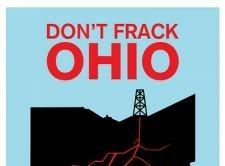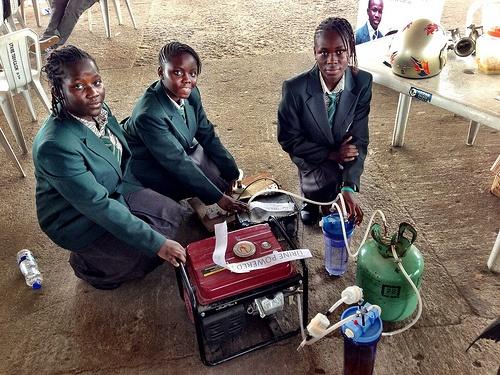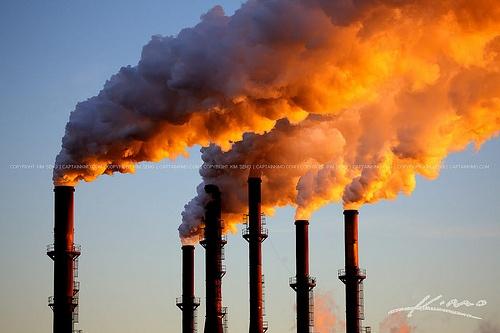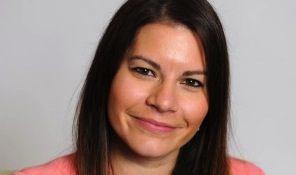New Ford F-150 Is the First Light-Duty Pickup Truck With LED Headlamps


The Ford F-150 has something that no other light-duty pickup truck has: LED headlamps. They use 63 percent less energy than the halogen bulbs used in other pickups and will last more than five times longer. The headlamps contain an innovative design that magnifies the light which means the road is more illuminated for drivers. Their design and manufacture also helps create jobs for one of Ford’s go-to lighting developers, OSRAM. More than 30 jobs were created at OSRAM's Hillsboro, N.H. facility.
The LED headlamps give new meaning to the advertising slogan, “Built Ford Tough.” They use semiconductor chips to control the light, which makes them more durable, and that means they last longer. Ford lighting expert John Teodecki is convinced of the durability of the LED headlamps because he knows all the tests conducted on them. “We fire stones at this headlamp, expose it to extreme sun, soak it in saltwater, shoot rocks, rock salt and ice – this thing is very tough to crack," said Teodecki.
The 2015 Ford F-150 is up to 700 pounds lighter than its predecessor and contains the latest EcoBoost technology in a 2.7-liter engine that is more efficient. The engine has standard Auto Start-Stop technology which shuts off the engine when the pickup is at a stop. When the brake is released, the engine restarts. The engine also contains a compacted graphite iron cylinder block, which saves weight. The Ford F-150 with the 3.5-liter EcoBoost was launched less than three years ago and now accounts for about 35 percent of all F-150 sales.
“The F-150’s proven 3.5-liter EcoBoost has become the industry benchmark for advanced and efficient truck engines,” said Raj Nair, Ford group vice president, global product development. “We’ve applied lessons learned from the 3.5-liter EcoBoost to the new 2.7-liter EcoBoost, but with new technologies that make this more efficient engine perform like a larger mid-range V8.”
The F-150 has some rather great features, including a Lane-Keeping System which helps avert unintentional drifting of vehicles off driving lanes by automatically detecting the left- or right-hand lane markings using a camera mounted between the windshield and interior rearview. The Blind Spot Information System uses radar hidden in the taillamps to detect a vehicle entering a driver’s blind spot while driving or backing up. The Remote Tailgate allows the tailgate to be locked, unlocked and released with the key fob.
“The all-new F-150 redefines the future of trucks, and it is yet another example of our One Ford plan producing vehicles that serve customers with a commitment to the very best quality, fuel efficiency, safety, smart design and value,” said Mark Fields, Ford Motor Company chief operating officer.
Image credit: Ford Motor Company
Innovators Aim to Prevent Water-Borne Illnesses During Natural Disasters


By Ben Park
"Water, water, every where,
And all the boards did shrink;
Water, water, every where,
Nor any drop to drink."
- Samuel Coleridge, "The Rime of the Ancient Mariner"
Coleridge was describing a sea journey when he wrote these words in the late 18th century. But those same words, slightly updated for modern times, could be used to describe the Philippines after the 2013 typhoon or Haiti after flooding in the wake of the 2010 earthquake.
While scarcity due to climactic and economic conditions receives the bulk of attention, there is another form of water crisis that comes on the heels of natural and man-made disasters: too much water of the wrong kind.
Less than 3 percent of the Earth's water is fresh, and only 0.3 percent of that water is found on the Earth's surface in lakes, rivers, streams and ponds. When natural disaster strikes, the sources of improved, fresh water are compromised. In the case of the Philippines where fresh water was already in limited supply during normal conditions, the situation becomes desperate.
After the typhoon, the Associated Press reported that Filipinos "resorted to scooping from streams, catching rainwater in buckets and smashing open pipes to obtain what is left from disabled pumping stations. With at least 600,000 people homeless, the demand is massive."
A heavyweight problem
In disaster cases, the risk of water contamination -- and the diseases it causes -- dramatically heighten from the already frightening norm. The World Health Organization (WHO) estimates that diarrhea, typically caused by contaminated water, causes 4 percent of all deaths and 5 percent of health loss to disability worldwide. Gastrointestinal infections -- most caused by poor water -- kill around 2.2 million people globally each year, mostly children in developing countries.
Water comprises 65 to 75 percent of human body weight. Humans can last only three to five days without it. In disasters, victims often resort to whatever source of water they can find -- leading to diseases such as cholera, which can kill a person within days.
Agencies such as the Red Cross are at the ready to provide essential water, but the amount of assistance they can provide is inhibited by one major factor: Water is heavy (a gallon of it weighs 8.34 pounds) and expensive to ship.
Innovation creates solutions
The good news is that innovation is leading to some intriguing solutions that center on creating fresh water at the source of the problem.
A French company called Eole Water is using wind turbines to create water from air. A prototype system near Abu Dhabi has been able to collect an average of more than 62 liters of water an hour from dry desert air.
EcoloBlue makes generators that extract water from the humidity in the air and use a multi-filtering process to ensure cleanliness. An EB26 system can be combined with a solar generator to produce between one and three gallons of clean water a day.
Another potential solution, called the Watercone, is a simple and elegant solar still. Pour salty or brackish water into the pan, then place the Watercone on top. The black pan absorbs the sunlight and heats the water. The evaporated water condensates into droplets of clean water that trickle down the inner wall into a trough at the outer edge of the cone.
Back in 2013, inhabitat.com contributor Rebecca Paul listed a few other promising innovations that are worth a mention. These include:
- The Lifestraw, a one-person filter shaped like a cigar that removes pathogens in the time it takes water to travel from its source to the drinker's lips.
- Ceramic water filters provided by UNICEF and the Water and Sanitation Program with tiny pores small enough to remove virtually all bacteria and protozoa.
- The Cycloclean from Nippon Basic, which harnesses kinetic energy from peddling a bicycle to purify water from any potable drinking source.
- The Life Sack, which uses SODIS (Solar Water Disinfection Process), a thermal treatment process that kills deadly microorganisms and bacteria in water.
- The Pure Water Bottle, a device that is capable of filtering soiled water in two minutes using a combination of four micron-sized water filters and a wind-up ultraviolet light system.
- The Solarball, a device slightly larger than a bowling ball that when placed in the sun uses evaporation to separate dirt and contaminants from water.
Water for critical medical situations
The solutions above address the critical issue of clean drinking water, but there's also the need to deliver water within a sterile saline solution delivered intravenously. For people suffering from critical conditions such as cholera, fluid through the veins is the only method of rehydrating the body quickly enough for patients to recover.
But the weight of water also effects the logistical cost of shipping IV-hydration solutions used to treat water-borne disease. These bags contain 99.1 percent water. It costs more than $700, for example, to ship 14 units of 1-liter saline IV bags from San Francisco to Conakry, Guinea in Africa via the FedEx for medical devices rate.
Fortunately there is a solution at hand for cheaper shipping and easier storage of saline IV bags. Fosmo Med offers Maji, a field hydration system for IV use that is shipped without water. An estimated 16 Maji bags can be shipped for the same cost as one traditional IV saline bag. Once onsite, forward osmosis technology converts local water into a sterile solution without requiring power of any kind.
Greater hope for the future
Solving the worldwide fresh water problem will take long-term dedication, but thanks to a wide range of organizations contributing resources and innovation using simple and inexpensive technologies, there is more hope than ever for the future -- whether the problem is too little or too much water.
Ben Park is the founder and CEO of Fosmo Med.
Viva Las Vegas as lights go out for Earth Hour


On 29 March, between 8.30pm and 9.30pm (local time), all Caesars Entertainment's resorts and casinos in North America will participate in Earth Hour to bring awareness to the environmental concern of climate change.
Guests and employees will be encouraged to turn off all non-essential interior lighting, while the resorts' lit exteriors and marquees will be shut off for the hour.
Sponsored by the World Wildlife Fund (WWF), Earth Hour has grown to involve hundreds of millions of people across 7,000 cities and 154 countries in a collective statement of concern about climate change.
Earth Hour is one of the company's many initiatives comprising its larger sustainability strategy, CodeGreen, and serves as a visual representation of their commitment to sustainable practices and environmental stewardship. So far Caesars has succeeded in reducing energy use 19% per air-conditioned square foot (from 2007 through 2012) although the company has grown organically and reduced absolute GHG emissions by 10% at domestic properties from 2007 to 2013. It has also reduced its carbon footprint by 12% and water usage by 7%.
"Caesars has been a leader in promoting Earth Hour, encouraging other casinos and businesses in the region to participate. Seeing the lights go off in America's brightest city every year is a reminder of our movement towards becoming a more environmentally and socially sustainable Las Vegas, as well as all the work we have yet to do to make a real impact on climate change in our community and as a planet," commented Tom Perrigo, Chief Sustainability Officer at City of Las Vegas.
3p Google Chat with Ford Motor Co., DTE Energy Company & GE Ecomagination


Please join us for special edition of our Weekly Google Chats on March 20th. These chats are broadcast on our Google+ channel and embedded via YouTube right here on 3p.
On Thursday, March 20th at Noon PST (3pm EST), TriplePundit’s Founder and Publisher, Nick Aster, spoke with Mike Tinskey, Ford Motor Company's Global Director Electrification and Infrastructure; Haukur (Hawk) Asgeirsson, Manager of Power Systems Technologies at DTE Energy Company; and Deb Frodl, Global Executive Director of General Electric's Ecomagination.
Developing reliable and sustainable energy sources has emerged as one of the great global challenges of our time. From the power necessary to run our homes to new innovations in the generation of renewables, business leaders across the globe are creating approaches that are reshaping the way we source and use energy. Businesses and vehicles are beginning to use smart technology to become more efficient, and the next generation of Ford's electrified plug-in vehicles may not even require a plug at all.
Nick talked with Mike, Hawk, and Deb about auto manufacturers' new product development strategies, the increased deployment of charging stations, and the role of partnerships in advancing the industry.
If you missed the conversation, you can watch it right here or on our YouTube channel.
Link Between Fracking and Earthquakes Grows With Surge of Quakes in Ohio


Evidence is mounting that there is a connection between the hydraulic fracturing—or fracking—method for extracting natural gas and earthquakes.
Consider this item from EcoWatch this week: “On Monday, Northeast Ohio experienced at least four earthquakes in Mahoning County, just south of Youngstown. Can anyone guess what was nearby? - A fracking site with seven drilling wells. The Ohio Department of Natural Resources ordered the Texas based energy company, Hilcorp, to halt all fracking operations in the area.”
Also on Monday, a ClimateProgress article explored the idea that as fracking operations grow in Ohio, “so do earthquakes.”
Coincidence? It’s possible, but quite possibly not. Ohio is merely the latest place to make this connection: Other sightings on the fracking-earthquake circuit have occurred in the U.K., the Netherlands, British Columbia, East Texas, Oklahoma and even California.
Last November, Northern Texas towns experienced an intense string of 16 earthquakes over a three-week period–the last of which was one of the most powerful in the area in the past five years.
A report last month on the Moyers & Co. Connecting the Dots blog said: “In both Texas and Oklahoma, the number of earthquakes per year has increased ten-fold. And wells storing wastewater from fracking have also been linked to hundreds of earthquakes near Youngstown, Ohio.” The report explained: “U.S. Geological Survey scientists have found that at some locations the increase in seismicity coincides with the injection of wastewater in deep disposal wells. Much of this wastewater is a byproduct of oil and gas production and is routinely disposed of by injection into wells specifically designed for this purpose. So, the actual hydraulic fracturing process itself is not to blame in these cases; instead, it’s the injection of wastewater into deep wells that accompanies it.”
That’s pretty much a technicality, because the wells would not exist but for the fracking projects. However, USGS officials say that the recent spate of earthquakes in Ohio were not related to wastewater injection, and are instead looking into whether fracking itself is related to the earthquakes. If fracking is determined to have caused last week’s earthquakes in Ohio, it would be the first time that fracking—and not waste disposal—was linked directly to earthquakes.
In Ohio, the ClimateProgress article reported a “surge” of earthquakes there in recent years, “an uptick that corresponds with an increase in fracking in the state.” A Columbus Dispatch analysis, based on data from state’s Department of Natural Resources, found that between 1950 and 2009, Ohio saw an average of two greater than 2.0 magnitude earthquakes each year. Between 2010 and 2014, when fracking operations began to take off in the state, that number jumped to an average of nine per year.
That increase has been mirrored nationally, the analysis found. Between 2010 and 2012, there were an average of 100 magnitude 3.0 or higher earthquakes in the U.S. each year, compared to the 21 the country experienced each year between 1967 and 2000.
While there may not yet be a definite, incontrovertible cause-and-effect link between fracking and earthquakes, something is going on, and it seems more than just circumstantial. It’s pretty risky to ignore it.
Image credit: frack-ohio by Jayson Shenk via Flickr cc
Private Investment in Ocean Restoration on the Rise Around the World


A version of this post was published on the Impact IQ blog
By David Bank
What’s good for fish is good for fishing communities — and for impact investors.
That’s the thesis of three new vehicles for investing in sustainable fisheries that will be tested in the Philippines, Chile and Brazil over the next two years and then offered to investors more broadly.
Former New York City Mayor Michael Bloomberg signaled last month that Bloomberg Philanthropy’s $53 million initiative to reverse the decline of the world’s oceans would focus heavily on attracting private capital.
In a report released on Tuesday, EKO Asset Management Partners signaled how the initiative might spur this private investment. The report sketches plans for a $1 million to $5 million small-enterprise loan fund for fishermen and processors; a $20 million to $50 million public-private fisheries infrastructure fund; and, perhaps most provocatively, an impact fund to finance broad fishery improvement projects that would be repaid via long-term purchasing contracts from seafood distributors and retailers.
EKO, which has made a specialty of designing innovative impact financing mechanisms, will develop open-source “investment blueprints,” including financial models and term sheets. The tools are intended to help microfinance providers, infrastructure investors, private foundations and governments to implement similar projects in Chile, Brazil and the Philippines as well as other countries.
EKO expects to lead by example. “We very much intend to raise money around these ideas,” said Jason Scott, EKO’s managing director. “We will try to go to the market with an investment vehicle or two sometime over the next few years.”
Bloomberg and Rockefeller team up for ocean restoration
The Rockefeller Foundation expects to support the investment vehicles, but the form of financing has not yet been determined. Rockefeller has been a major funder of efforts to build the field of impact investing, and in the past has seeded impact funds such as Acumen and E+Co through so-called program-related investments.
“We’re developing different blueprints for these funds and ground-truthing what’s viable in different geographies,” said Cristina Rumbaitis del Rio, who is spearheading Rockefeller’s emerging oceans initiative. “Once we get that, we could very well be involved in setting up such a fund.”
Bloomberg and Rockefeller are jointly backing EKO’s exploratory research and planning under a project modestly called, “Save the Oceans Feed the World.” Mr. Bloomberg said in a statement, “Providing financial incentives to support sustainable fishing practices can — with changes in local communities and national governments — help reverse this trend” toward overfishing.
Private capital spurs higher revenues
The proposed private-capital financing vehicles all leverage one of the most promising findings from current ocean-recovery efforts, which have been funded mostly by governments or foundations. Even sorely depleted fisheries can recover and even thrive on a sustainable basis with proper, proven fishery management.
That means the fishers, processors and other suppliers in a recovering fishery will over time have higher revenues and greater ability to repay lenders and investors. The gap occurs in the interval between the adoption of sustainable practices and the resulting improvement, when income for fishermen and the local supply chain may fall dramatically. The financing vehicles represent several approaches to bridging that gap.
Potentially offering the highest returns is a private equity-style fisheries impact vehicle that would use long-term purchase agreements to finance fishery improvement projects, or FIPs, that would enable a long-term increase in allowable catch and thus revenues. Many seafood retailers require that their suppliers either have certification from entities such as the Marine Stewardship Council or be involved in an active FIP. A triangular financing structure would give outside investors a way to finance FIPs and recoup their capital via the cash flow from distributors and retailers who need a stable, and growing, supply of fish.
The structure is similar to so-called “social impact bonds,” or, more accurately, pay-for-success contracts. “The seafood companies don’t have to undertake the fishery improvement project, but if the fishery recovers, they commit to buy that fish,” said EKO’s Kelly Wachowicz, the former investment banker who authored the report. “For the investors, they have to pick the right improvement plan.” She suggested such a mezzanine debt fund could generate annual returns of 10 to 15 percent.
A potential "game-changer"
One Silicon Valley venture capitalist called the fisheries impact vehicle a potential game-changer. “You will encourage fisheries to be better managed and retailers are going to opt to security their supply,” said Peter Shannon of Firelake Capital in Palo Alto, Calif. But he warned that such approaches will require increased levels of transparency and traceability in the notoriously opaque seafood industry.
The $1 million to $5 million small business fund would be similar to other microfinance or “SME” funds for small- and medium-sized enterprises. It would make loans and equity investments in relatively inexpensive processing improvements such as icing, packaging and cold storage, distribution needs such as trucks and storage depots, and marketing efforts to boost value and prices. Those businesses generally operate on thin margins, so such a fund would likely generate single-digit returns, but could be appealing to current microfinance investors and foundations able to make program-related investments.
The public-private partnership fund is an adaptation of a structure commonly used to finance infrastructure improvements. The government of the Philippines is particularly keen on such structures to fund highways, schools, airports and hydroelectric plants. A PPP would fund private companies for science and stock assessments, data monitoring, regulatory enforcement, ecosystem services management, quota buyback programs and subsidy payments. The government would repay investors under a long-term services contract with benchmarks and milestones.
The investor-appeal of such structures will go a long way toward determining whether private capital can play a significant role in ocean restoration. The field has been chronically under-invested and even under-appreciated, notwithstanding the critical role fishing plays in both protein production and livelihoods.
“We really got into this both from perspective of protecting marine fisheries ecosystems that are collapsing, but also understanding that millions of poor and dependent people are becoming even more disadvantaged as a function of this collapse,” said Rockefeller’s Rumbaitis del Rio.
EKO’s partners in the “Vibrant Oceans” initiative include Oceana, which will advocate for policy reforms for offshore fishing and Rare, which will work with coastal communities to change near-shore fishing practices.
“If you do policy, but you don’t have incentives for proper behavior, those reforms tend not to stay in place,” said EKO’s Scott. “We are trying to create the innovative financing that makes these reforms stick.”
Image credit: Denniz Futalan and Shukhrat Umarov via Pexels
'B the Change': 92 B Corps Honored as 'Best for the World'


According to the nonprofit B Lab, "B Corp certification is to sustainable business what Fair Trade certification is to coffee or USDA Organic certification is to milk.”
B Corp certification does not confer legal standing and is completely voluntary. However, it does provide the validation of an independent body acknowledging that the company has met a responsibility performance standard -- and B Corps across all industries are well known for positive impacts on both people and planet. We at Triple Pundit received our B Corporation status earlier this month -- joining more than 900 other forward-thinking companies.
Yesterday, the Wayne, Pa.-based B Lab honored 92 of these global companies for creating the most positive overall social and environmental impact with the release of its third annual "B Corp Best for the World" list. Including companies from 31 different industries, the list honors businesses that earned an overall score in the top 10 percent of all B Corps on the B Impact Assessment, a comprehensive assessment developed by B Lab that rates a company's impact on its workers, community and the environment. Honorees were recognized among micro, small and mid-sized businesses.
The list includes 92 honorees from 31 industries -- ranging from manufacturing and telecommunications to financial services and environmental consulting. Thirty percent of honorees are based outside the U.S., with 15 companies operating in emerging markets, such as Afghanistan, Kenya and Colombia. Highlighted companies include:
- CDI Lan: A Brazilian education and training company generating income and employability in low-income communities through internet cafes
- D.light design: A manufacturer and distributor of solar lighting and power products providing access to reliable, affordable, renewable energy for nearly 30 million people in 60 countries
- Sunrise Banks: A Minnesota community bank supporting affordable housing, small business development and not-for-profits.
- Co2 Bambu: A Nicaragua-based company that designs, manufactures and assembles ecologically sound structures for homes, schools and clinics.
- Quetsol: A Guatemalan solar company that provides affordable solar power to off-grid communities.
The full list is available here and is definitely worth a read in full, as each company brings its own set of values to the table and focuses on solving a distinctly different social or environmental problem -- underscoring the multifaceted nature of corporate social responsibility (CSR).
“Employees, consumers, investors and policymakers increasingly want to support companies that create a positive impact in the world, and the Best for the World honorees are the best of the best,” said Jay Coen Gilbert, co-founder of B Lab. “It’s particularly inspiring that 21 percent of the 2014 honorees are first time winners but long time B Corps. They’re winning the race to the top.”
The community of Certified B Corporations has grown from just over 600 companies in 2012 to more than 970 today -- hailing 60 industries and 32 countries unified by one common goal: to redefine success in business. B Lab will release separate lists recognizing the companies "Best for the Environment" (environmental impact), "Best for the Community" (community impact), and "Best for Workers" (employee impact) throughout 2014.
Triple Pundit is proud to join the growing global community of Certified B Corporations. To mark our newly-achieved B Corp status, we're offering Podium Posts to all certified B Corps. See details on the B Corp Resources page for members.
Image credit: B Lab
Based in Philadelphia, Mary Mazzoni is an editor at TriplePundit. She is also a freelance journalist who frequently writes about sustainability, corporate social responsibility and clean tech. Her work has appeared on the Huffington Post, Sustainable Brands, Earth911 and The Daily Meal. You can follow her on Twitter @mary_mazzoni.
Pee Power: The Next Step in Electricity Generation?


In late 2012, a class science project in Lagos, Nigeria created a buzz on the social media airwaves. Four teenage girls had created a power generator using human urine. The 14- and 15-year-olds, who created the project in an effort to find a safer generating system for local families that depend on gas-powered systems to generate electricity, figured out a way to separate and use the hydrogen from pee to essentially create electricity.
The girls were immediately hailed as forward-thinking budding scientists, and their project was showcased by Maker Faire Africa. The news also kicked off a long list of blog posts and articles (that are still surfacing) discounting the girls’ accomplishments. Geraldine Botte, a chemical engineer at the University of Ohio whose research first highlighted the possibility of urea electrolysis, pointed out that while the students' actions were “empowering,” it was really “a high school project.” She went on to add that, “you will never get more energy out than you put in because you are treating urea.”
Another observer, Nathan Lee (no relation whatsoever) went even further, and with an energy typical of many of the blogs that have strived to brush off the students' thoughtful work, gave a full-page account of why this was really nothing more than a “quack gadget” and little more than a “bong [fashioned] out of an Orchy bottle.” He did add, however, that he would be “happy to be proved wrong and we can finally harness the [guys] who piss in the street and the urinal at the pub could run the lights. Anyone else got any thoughts?”
Apparently, someone else did, and their names are Bill and Melinda Gates.
In December 2013, after Bristol Robotics Laboratory in the U.K. announced that it had developed a way to fuel a cell phone from pee, the Bill and Melinda Gates Foundation awarded Bristol Robotics Lab $100,000 toward the further development of “urine-tricity.”
Their methodology (which uses microbial cells as energy converters) is considerably more technical than that of the young scientists from Nigeria. It has also been able to stand up to some rather rigorous scientific scrutiny. So far at this point, the challenge for Dr. Ioannis Ieropoulos, Prof. John Greenman, Prof. Chris Melhuish and their Bristol Robotics team is to find a way to raise the sustained level of generation and power things greater than a phone call.
Urea electrolysis isn’t new. It’s been around for some years, thanks to Dr. Botte and others that apparently aren’t subject to the “ick” factor that most of us experience when we think of powering our computers or our toaster with pee. While there have been plenty of jokes to go around about four girls from a small village developing a way to save lives from carbon monoxide poisoning, I am looking forward to seeing what they develop next. For all the hype and the grief they received from social media, their real contribution was reminding the scientific world and philanthropists like the Gates of the human factor that made this particular research so timely and so critical. And that’s worth more than a science fair award.
Image credit: Erik (Hash) Hersman
Obama Administration Launches Climate Change Data Site


In order to help educate the American people, the Obama administration just launched a new site, data.gov/climate, devoted to providing data and facts about climate change.
The site is designed to help people “find data related to climate change that can help inform and prepare America’s communities, businesses and citizens.” The initial phase contains data and resources about coastal flooding, sea level rise and their impacts. “Over time, you will be able to find additional data and tools relevant to other important climate-related impacts, including risks to human health, the food supply, and energy infrastructure,” the site states.
The site, launched with “leadership” from the National Oceanic and Atmospheric Administration (NOAA) and NASA, was unveiled on Wednesday, March 19, when Obama administration officials met to talk about efforts by both the private sector and government to prepare for climate change impacts. A few weeks earlier, on March 4, Obama unveiled his 2015 budget request which asks for $1 billion for a resilience fund to mitigate against climate change impacts.
The New York Times points out that for now the site will be a “clearinghouse for climate science data” from certain government agencies, and will not benefit “average users." “Instead, NASA and the NOAA will call on researchers and private companies to create software simulations illustrating the impact of sea level rise,” the article stated.
The Obama administration appears to be taking climate change seriously. During President Obama’s State of the Union Address in January, he said that “climate change is a fact.” In February, Obama visited a farm in California’s San Joaquin Valley, the front lines of the three-year drought plaguing the Golden State. During his speech there, he linked the drought and climate change. "We have to be clear. A changing climate means that weather-related disasters like droughts, wildfires, storms, floods, are potentially going to be costlier and they're going to be harsher,” Obama said.
The site comes at a time when the American people are feeling the impacts, from floods to droughts, of a changing climate. It also comes at a time when most Americans don’t think climate change is a priority. A January Pew Research Center poll found that Americans ranked “dealing with global warming” No. 19 in a list of 20 top policy priorities for the President and Congress. However, most Americans do believe that climate change is occurring. An October 2013 poll by the Pew Research Center found that 67 percent of Americans think there is solid evidence that climate change is occurring. Among those who think there is solid evidence, 44 percent think it is caused mostly by human activity. A 2006 survey found that 77 percent thought there was solid evidence that climate change occurring. Clearly, more education is needed about climate change and its impacts.
Image credit: Kim Seng
Women in CSR: Laura Noctor, InterContinental Hotels Group


Welcome to our series of interviews with leading female CSR practitioners where we are learning about what inspires these women and how they found their way to careers in sustainability. Read the rest of the series here.
TriplePundit: Briefly describe your role and responsibilities, and how many years you have been in the business.
Laura Noctor: I am the Global Director of Corporate Responsibility for InterContinental Hotels Group (IHG). IHG is one of the world's leading hotel companies – we have 687,000 rooms in over 4,600 hotels in nearly 100 countries and territories around the world. We operate nine hotel brands including InterContinental, Crowne Plaza, Holiday Inn, and Holiday Inn Express.
I joined IHG in 2008 as Global Director of Corporate Responsibility (CR). Since then, I have worked across our entire CR agenda. I project managed the initial development of IHG Green Engage - our online sustainable environmental management platform, led our team’s stakeholder engagement activities including our CR Report and more recently have taken on a broader role, driving our sustainable communities programmes globally. One of my focus areas is the IHG Academy. The programme involves our hotels creating partnerships with local community or education providers and offering work experience opportunities with the aim of helping participants to become more employable. Another programme, IHG Shelter in a Storm, supports employees, hotels and communities impacted by disaster and leverages the unique role our hotels play in society. I manage a fantastic team, and together we work to convey the benefits of these programmes and make it as easy as possible for our hotels and colleagues to get involved.
3p: How has the sustainability program evolved at your company?
LN: The CR function was still fairly new when I joined IHG; actually I was just the second person to join the team which is now comprised of 13 people globally. This growth reflects how the company is really investing in CR. We’re part of a broader Business, Reputation and Responsibility department which brings together range of functions including, Legal, Audit, Global Standards and Risk. Together, we help manage the reputation of IHG and our brands, and look for positive ways to address complex social challenges in a way that is also great for our business and key stakeholders. All our programmes are rooted in creating shared value. I’m immensely proud that we have shifted from setting up CR policies and programmes to focusing on really embedding them across the business. There is always more to do but the good news is, we now have great momentum, for example over half our hotels use IHG Green Engage and we have over 300 IHG Academy programmes in over 50 countries.
3p: Tell us about someone (mentor, sponsor, friend, hero) who affected your sustainability journey, and how.
LN: I am inspired by my nephew who is just nine years old. For him, sustainability is not even something he thinks about, it’s just what makes sense. It’s amazing to see how the green agenda especially has changed over the years to become so mainstream. It also shows us how we need to be innovating products today to meet the needs of tomorrow’s consumer.
3p: What is the best advice you have ever received?
LN: Be present. I think it’s really easy to be distracted nowadays by 24-hour communications. I love travelling, (not surprising for someone who works for a hotel company!), and when I go somewhere new, I try and make an extra special effort to absorb what I am seeing, hearing and experiencing. Last year I was lucky to travel to Iguassu Falls which was breathtakingly beautiful. I just paused to empty my mind and take it all in….
And of course this skill is really important to my day job. Especially in developing my network and making myself fully available to those I manage so I, in turn, can help them grow.
3p: Can you share a recent accomplishment you are especially proud of?
LN: Surviving the London marathon - I found it really tough going. From mile 18 onwards it really did feel like a battle of the mind to get passed the finish line. The crowd was amazing and it really made me appreciate how powerful the simple act of encouragement can be. Since then I have certainly thought about how I can encourage others. Our team spent time in 2013 focusing on a strength-based approach to leadership. Our monthly "strength call out" exercise is helping us make time to get into this discipline. It’s an approach I would really recommend.
3p: If you had the power to make one major change at your company or in your industry, what would it be?
LN: I’d like us to get better at really conveying the huge economic impact of the hotel industry which often goes unsaid, particularly in terms of jobs. Our average hotel employs 75 people and is supported by 10 partners and suppliers so we have a huge opportunity to change lives. Hospitality is also unique in that people can work their way up from entry roles to senior management, learning on the job. Through the IHG Academy we’re telling this story in a way that inspires people to get involved.
3p: Describe your perfect day.
LN: My perfect day must include the following: good food, drink, sunshine and travel. I would start the day with a cup of tea upon waking, followed by a lovely jog in the sunshine. A leisurely breakfast, and then onto what I would call a "serious power shopping trip" - New York would be an ideal destination. I’d close out the evening with a cocktail at sunset followed by a lovely meal with my husband.